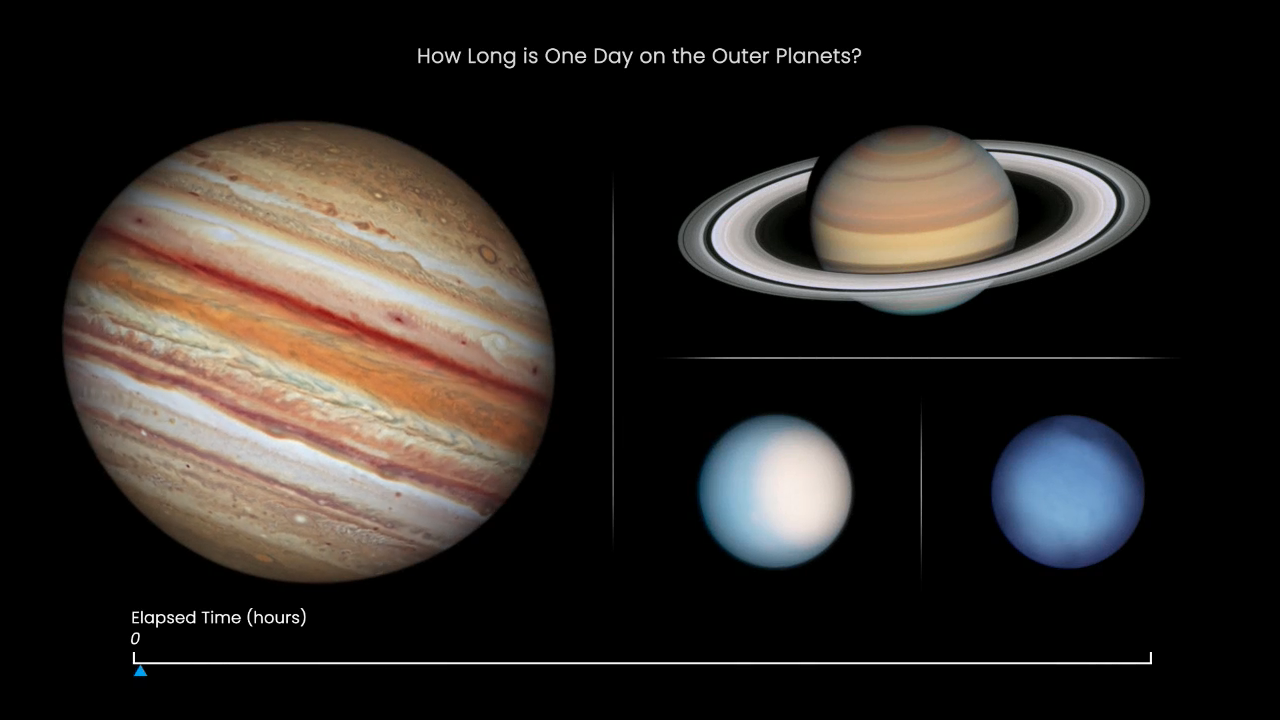1 min read
OPAL Grand Tour

From its vantage point high above Earth's atmosphere, NASA's Hubble Space Telescope has completed this year's grand tour of the outer solar system – Jupiter, Saturn, Uranus, and Neptune — returning crisp images that complement current and past observations from interplanetary spacecraft.
Hubble's snapshots of the outer planets reveal both extreme and subtle changes rapidly taking place in these distant worlds. Hubble’s sharp view gleans insights into the fascinating, dynamic weather patterns and seasons on these gas giants and allows astronomers to investigate the very similar—and very different—causes of their changing atmospheres.
About the Data
- Data DescriptionData DescriptionProposal: A description of the observations, their scientific justification, and the links to the data available in the science archive.
Science Team: The astronomers who planned the observations and analyzed the data. "PI" refers to the Principal Investigator.The HST observations include those from program 16266 (A. Simon)
- InstrumentInstrumentThe science instrument used to produce the data.WFC3/UVIS
- Exposure DatesExposure DatesThe date(s) that the telescope made its observations and the total exposure time.Sep-Oct 2021
- FiltersFiltersThe camera filters that were used in the science observations.F395N, F467M, F502N, F547M, F631N, F657N, F845M
- Release DateNovember 18, 2021
- Science ReleaseHubble’s Grand Tour of the Outer Solar System
- CreditNASA, ESA, Amy Simon (NASA-GSFC), Michael Wong (UC Berkeley); Image Processing: Joseph DePasquale (STScI)

These images are a composite of separate exposures acquired by the WFC3 instrument on the Hubble Space Telescope. Several filters were used to sample medium wavelength ranges. The color results from assigning different hues (colors) to each monochromatic (grayscale) image associated with an individual filter.
Related Images & Videos

Outer Planets Rotating (Annotated)
From its vantage point high above Earth's atmosphere, NASA's Hubble Space Telescope has completed this year's grand tour of the outer solar system – Jupiter, Saturn, Uranus, and Neptune. Hubble's snapshots of the outer planets reveal both extreme and subtle changes rapidly...
Share
Details
Claire Andreoli
NASA’s Goddard Space Flight Center
Greenbelt, Maryland
claire.andreoli@nasa.gov





































